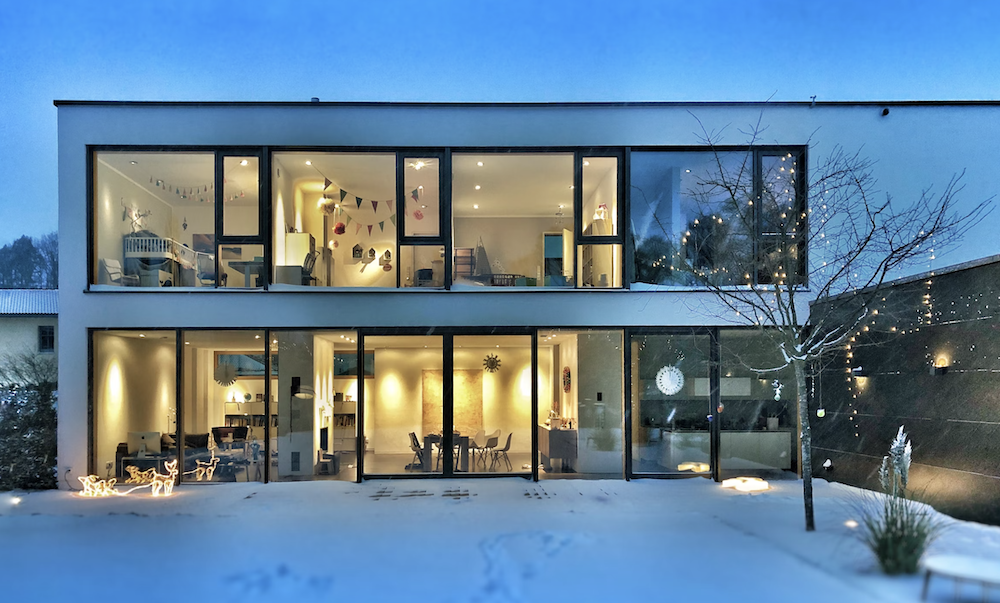Modern infrastructure relies on advanced insulated heating pipes for professional use, particularly in district heating and large-scale commercial projects. This is because the smart integrated insulated pipes ensure reliability and sustainability across diverse professional applications. These applications include:
The post Smart Integration of an Insulated Heating Pipe for Sustainability appeared first on Green Prophet.
Home heating and insulation. Sustainability is really just about pipes and pumps
Professionals of heating and cooling systems have continually improved the designs of these systems to meet the worldwide standards of carbon-neutral infrastructure and greener energy solutions. At the core of their transformations lie insulated heating pipes. These pipes were initially viewed as a mere means of transporting hot water from one point to another, but today, they have been improved to achieve sustainable energy networks.
Historically, pipes were installed to connect plants or boilers with end users, with little consideration for monitoring long-term heat loss. Additionally, older copper or steel pipes needed to be insulated when installing the designs. This not only overloaded the piping system but also could not keep the water temperatures optimum over the entire length of the piping system.
However, the turning point for heating and cooling systems came when pre-insulated pipe technology and PE-Xa, a durable and flexible polymer, were introduced. These products not only provide a means of transportation of hot water, but they also have smart ready components that professionals can integrate with sensors to measure flow, pressure, and temperature in real time.
In this article, we explore how insulated heating pipes are revolutionizing energy networks by integrating smart controls, improving professional applications, and aligning with sustainability goals.
Smart Integrations in Insulated Heating Pipes
Floating homes with the latest eco gear
Insulated heating pipes are no longer about heat loss reduction only. They now use smart technologies that enhance sustainability, monitoring, and efficiency. These technologies include:
-
Sensors and digital monitoring
The addition of digital layers and sensors to insulated pipes is one of the most crucial transformations that have promoted sustainable energy. Competent professionals now embed monitoring equipment around or into the pre-insulated pipe, allowing operators to gain real-time performance, temperature, and flow visibility throughout the system.
With the help of these systems, operators can carry out predictive maintenance where inefficiencies or small leaks arise. This helps prevent arising issues from compromising the whole system while minimizing system downtime.
-
IoT and Smart Energy Networks
The Internet of Things (IoT) is reshaping the interaction of heating and cooling systems. They have transformed insulated heating pipes that were once considered static infrastructure into dynamic data points that can be monitored from smart energy grids.
Operators of these systems can easily use digital controls to adjust flow, reroute heating water during sectional maintenance, and match supply demand. This ensures end users and providers experience the ideal balance of energy savings and comfort.
-
Integration with renewable sources
Smart integration allows professionals to connect insulated heating systems to solar thermal or biomass heating. These renewable energy sources provide a fluctuating energy supply and thus require advanced pipe products to keep a stable flow and minimize heat loss. Moreover, the use of smart controls allows operators to ensure that connections used in renewable sources align fully with system demands, thus promoting a smooth transition to greener energy.
Sustainable Applications of Smart Integrated Insulated Pipes
Modern infrastructure relies on advanced insulated heating pipes for professional use, particularly in district heating and large-scale commercial projects. This is because the smart integrated insulated pipes ensure reliability and sustainability across diverse professional applications. These applications include:
-
District heating and cooling systems
In most urban centers, heating and cooling systems have been made flagship examples of low-carbon infrastructure within districts. These systems transport hot and chilled water through insulated heating pipe networks across neighborhoods while minimizing thermal losses.
The smart sensors and meters connected along the pipe network enable operators to ensure the temperatures stay within the limits designed. They also ensure the pumping energy is optimal and the balance between demand and supply is met, hence preventing unnecessary waste.
-
Commercial and residential house connections
At the building or house level, insulated pipes are critical in connecting the main distribution network to the end users. These modern insulated pipes are flexible, making it easy for contractors to lay them in complex layouts and joints without compromising efficiency. For example, flexible PE-Xa designs allow for longer continuous runs, thus minimizing weak points and improving flow.
-
Industrial energy systems
Beyond basic heating supply, smart integrated insulated pipes are increasingly used in steam distribution, process heating, and chemical manufacturing. These processes require stable thermal conditions for both safety and product quality. For example, pharmaceutical industries use temperature-restricted conditions to preserve fragile compounds and food processing plants count on accurate regulation of heat to improve their hygienic processes.
Heavy industries such as steel manufacturing or refineries also rely on insulated pipes equipped with leak sensors, which serve in reducing energy wastage and preventing downtime and disastrous failures. This leads to a decrease in emissions, which contributes to decarbonization around the world.
Sustainable Benefits of Smart Insulated Pipes
Since professionals began integrating insulated pipes with intelligent monitoring technology, they have created a powerful and sustainable option for heating and cooling. The purpose of these pipe networks is to reduce waste, achieve world goals set in relation to sustainability and increase performance. They support efficiency and sustainability in industries and cities.
Some of the sustainable benefits of smart insulated pipes include:
-
Energy efficient and carbon reduction
Insulated heating pipes that are integrated with smart technology help to lower the total energy needed for heating or cooling. This perfectly aligns with governmental sustainability goals, particularly for cities aiming to achieve net-zero emissions.
-
Long-term economic value
Sustainability not only serves environmental purposes but also has economic impacts. For example, smart insulated pipes help to reduce the need for maintenance. They also prolong system lifespan leading to reduced operational expenses in the long-run. This power mix of efficiency and savings provides significant long-term business, industrial and municipal value.
-
Flexibility of system designs
Due to the use of cross-linked PE-Xa insulated pipes, professionals can easily adapt these pipes into new system designs. Their flexible structures help to ensure that overall heating and cooling systems remain sustainable for decades. Furthermore, they provide smooth flow and return cycle even when new infrastructures are introduced, ensuring long-term reliability and sustainability.
Conclusion
The modern smart insulated heating pipe has shifted from being a passive tool used for carrying heating water to becoming a revolutionary product that aims at achieving sustainability. By using pre-insulated pipes as well as smart monitoring systems, experts have developed sustainable energy networks that offer optimum flow and low heat loss.
Going forward professionals can incorporate insulated heating pipes with AI-controlled energy operations, hybrid renewable energy and digital twins to make them sustainable and responsive to future energy demands.
The post Smart Integration of an Insulated Heating Pipe for Sustainability appeared first on Green Prophet.




